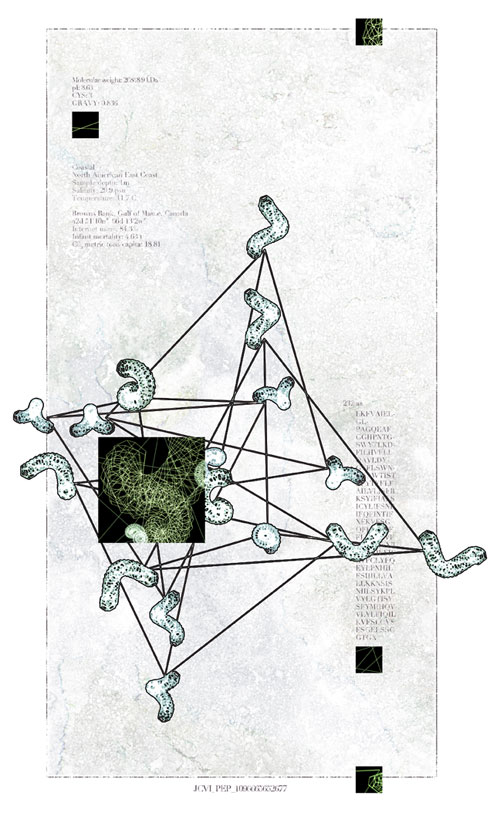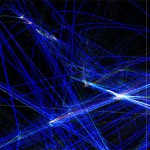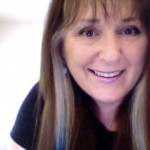
Ruth West is her own walking, talking art-science experiment. She’s looking for the kind of resonances that shake things up to create new systems of inquiry.
“Computation and digitization is, in my opinion, the most important transformation of culture” West says. “We’re digitizing everything. Ourselves, nature, culture.”
A decade ago, working in a laboratory by day and a painting studio at night, West decided to bring art+science together into one practice. Now, she’s looking for interesting questions that require interdisciplinary collaboration, carving a path through the complexity.
She’s collaborated to build an immersive data-art exhibit that allows people to interact with the world’s largest metagenomics ocean data set, a project to study the psychological basis for experts who must understand 2D and 3D data, creation of a citizen-science-based rephotography cell phone app, and she is now developing a project using hundreds of thousands of images of the night sky over the South Pole.
She’s also the pioneer and co-author of a concept called DataRemixing, which hones in on the ways that scientists, artists and everyone in-between deals with big data in an age of ever-increasing information.
The IDC estimates that by 2020, the Digital Universe will grow to 44 trillion gigabytes. That means there will be “nearly as many digital bits as there are stars in the universe” (IDC) in a human-engineered virtual space. The interaction between people and an “Internet of Things” in a digital universe introduces interesting new questions for how humans deal with data.
For instance, does digitization of the world mean we are forced to find new ways to navigate through it, or is it the increased technological capacity provided by the digital universe that enables new ways to navigate the world – hybrid ways connected by this digital parameter of the world?
West is looking to carve a path through the complexity of dealing with data, creating tools that allow humans to interact with data in more engaging ways that offer insight in both ephemeral and empirical ways, data-tools that can be used both in the laboratory and the museum.
“If there is an art-science, what does it look like?” she asks. “Most importantly, what does it enable us to do that we couldn’t do otherwise? Is there any possibility that art could nurture scientific discovery?”
With a background in studio art, new media arts, microbiology, psychology and cross-appointed in four UNT colleges, West is on a mission to find questions that require interdisciplinary collaboration and build communities of practice that can address those questions. She also runs UNT’s art + science lab, inviting students to collaborate on interdisciplinary teams and projects in various stages of development.
“If there is an art-science, what does it look like? Most importantly, what does it enable us to do that we couldn’t do otherwise?”
For West, combining art + science is “an exuberant, thoughtful, difficult, complex engagement” that asks questions like “how to create new ways of seeing, new ways of knowing, new ways of being, new ways of making, new ways of experiencing.”
To illustrate this point, she notes that infinite decisions made by people dealing with data – what resolution to take a picture, whether to save it, “how we’re going to collect it, how we’re going to store it, who’s going to have access to it” – is all based in what we think we’ll get out of that process: What we think we are able to know.
“Every scientific instrument, everything we view that’s digital, we make choices,” West says. “If you extrapolate that out all the way through every scientific experiment, every surveillance tape, what you get is this observation that ‘How we are seeing things – the choices that we are making about what we can know – are continually pre-determining what it is we can see and know’.”
“So for me I think the biggest question of our time is this, ‘How do we look for what we don’t know we’re looking for?’ And that’s where art-science comes in.”
News@xREZ April 2016 by Amelia Jaycen


